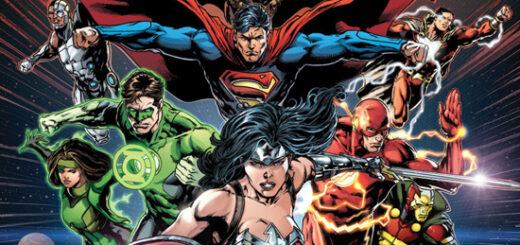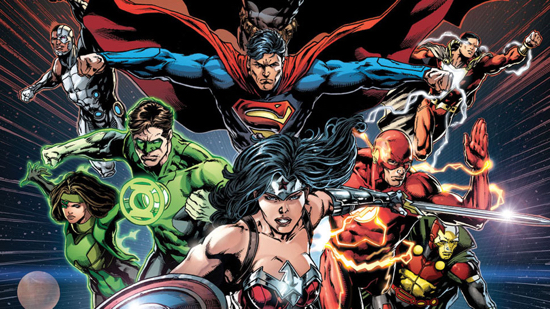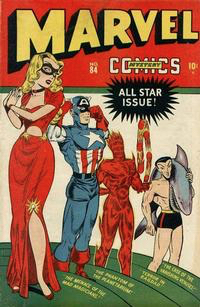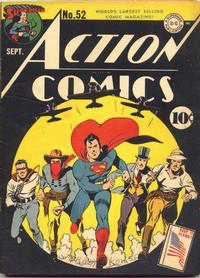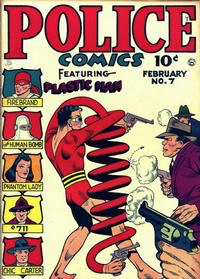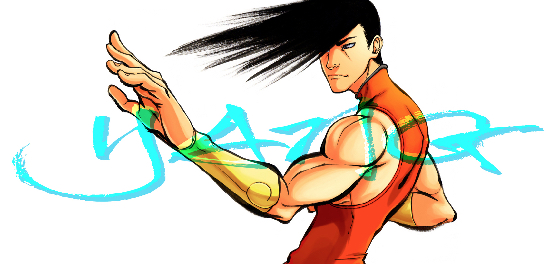Joe Corallo: Don’t Call It A Comeback!
I’m sure many of you are aware of the upcoming DC Rebirth. I’ve been following it along since the first bits of news surfaced, and I almost wrote about it last week. Now I feel enough is out there where I can start forming some level of opinion on it. And try as I might, it’s not a particularly positive opinion. However, that’s strictly regarding Rebirth. I do think DC may have a couple of good ideas here. Just not with diversity in mind.
Hear me out on this one.
Rebirth shouldn’t shock anybody. As far back as last August, we heard that DC was going to “Stop Batgirling” and get back to “meat and potatoes.” Many people wrote about this and how problematic it was since “meat and potatoes” came off as “more straight cis white guy stories.” Back in August, that was just an opinion on what might happen. Granted, a well informed opinion, but still an opinion. Based on the titles being offered starting in June, it’s hard to argue that this isn’t now a fact. At least it took almost a year for this all to happen, which gave us time to enjoy comics like Doctor Fate and Midnighter. They will be sorely missed by me and quite a few people I know. Not enough people, apparently, but still quite a few.
In lieu of diversity, DC is doubling down on its core characters. It may come of as a sound conservative move to retreat back, reassess, and plan accordingly to expand after. Looking at the line-up DC has presented certainly shows that they are taking far fewer risks than they did back with the New 52. Outside of arguably Gotham Academy: Next Semester, every single title is a superhero one. At a time of where publishers like Image are encroaching on the big two with its wider variety of genres, this seems like more than just one step back for DC Comics.
Why would DC think this is such a good idea?
The short answer may very well be DC’s Chief Creative Officer Geoff Johns. He’s a talented writer that has helped DC a great deal in the past. However, he’s also constantly looking backward when it comes to important aspects of the stories he’s telling. This is the guy that orchestrated the biggest reboot of Green Lantern which involved bringing back straight cis white Hal Jordan as its torchbearer. Similar strategies were used in his runs on comics like The Flash and Teen Titans. His comments that he made regarding Rebirth are troubling. A lot of looking backward and keeping the fan base small, isolated, and nearly impenetrable is what I and many others got out of it.
As a queer reader, canceling the only gay male superhero comic alone hits a bit hard, especially after a fairly short run. Cancelling Catwoman as well seems a bit excessive. In addition to Batwoman staying gone, Poison Ivy not continuing to have a series (I know it was just meant to be a mini-series, but still), that just leaves Harley Quinn and Hellblazer. The only queer characters worth having in their line are only the ones who have been in movies and TV shows I suppose. It’s rough enough that the queer representation lately has been almost exclusively cis and white (at least in headlining a book), but this step back makes it seem like it may be a long time before we can even move past that. It looks like it could be a long time before Alysia Yeoh becomes a kickass vigilante (if she ever does) and don’t even get me started on when we’ll see Rene Montoya as The Question or Kate Godwin as Coagula again.
At this point you may be curious as to what I was getting at before when I said that DC may have some good ideas here. They might. Not with Rebirth, but with Vertigo and their Hanna-Barbera titles. Not too long ago, DC’s New 52 did have quite a few risky books coming out. While doing that, they neglected the Vertigo line. Saying Vertigo as an imprint was anemic at the time would have been a nice way to put it. Part of that was DC bringing back characters like Animal Man, Swamp Thing, Constantine, and Doom Patrol into the main continuity. They also just weren’t pumping out the same number of titles, and books like Fables were coming to an end. Now, Vertigo appears to be thriving. It seems pretty clear to me that DC’s approach now is to keep it’s main line more conservative and less risky and using Vertigo to take chances and experiment again. When framed in this context, it doesn’t sound quite as bad. I haven’t really seen it framed this way yet, but maybe as the new Vertigo titles get further along and Rebirth begins, we’ll see commentators putting this all in a slightly different context.
With the Hanna-Barbera titles, DC can address the problem with the lack of comic offerings they have for kids. That’s a good thing. We need more kids reading comics if we’re going to keep expanding the readership. And the way Jim Lee is apparently looking into making Hanna-Barbera comics a shared universe, it allows the kind of story telling that’s used in most DC comics while having it for a younger audience. Hey, it works for Archie.
If your head is currently exploding because I haven’t taken the time to acknowledge how much I hate the new hipster looking Scooby Doo character designs, it’s because I don’t. If you have a non exploded head on your shoulders you’ll be able to find out why. It’s because the new Scooby Doo isn’t supposed to be for me. It’s supposed to be for kids. Some of which might not even be aware of Scooby Doo. This could be their first look at these characters. Maybe the kids will hate it. I don’t know. What I do know is hating character designs for kids’ comics clearly not made for me is a waste of my own time and energy. I have plenty of other things to get angry about. This is an election year after all.
My qualms with the Hanna-Barbera line of comics lie in diversity. They are white. Very very white. And straight. And cis. That’s the downside of going back to older properties like this. It’s a point I’ve brought up before, and this is just another example of the problems of resurrecting much older properties that didn’t have diversity in mind. I’m not angry that Scooby and the gang look like they’re living in Williamsburg or Bushwick now, but if you don’t mind updating the designs, why do they all still have to be straight cis white people? If it’s not at all important that Shaggy stays clean shaven and is allowed to be drawn with crazy facial hair, then why is it so important that he has to be portrayed as white?
The Vertigo line seems to have more stories involving women than the main DC line. That’s great. We definitely need more of that. However, Vertigo does seem very white. They have some great titles, but between DC’s main line, the Hanna-Barbera offerings, and Vertigo, I can’t help but feel we’ve taken a few steps back in queer and minority representation. Maybe this is temporary, since comics focusing on diversity seemed temporary at DC, but we’ll have to wait and see.
In other news, I’ve caught up on Image Comics’ The Wicked + The Divine. Now that is a great inclusive comic.

